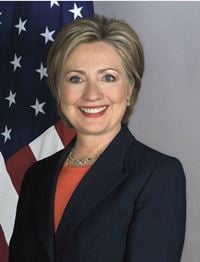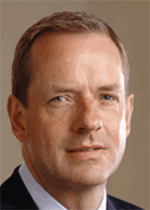A few words in a small publication in Pakistan earlier this week offered a stark contrast to sentiment about pharma companies in the U.S.
 |
| Gilead CEO John Martin |
Gilead Sciences' ($GILD) hepatitis C drug Sovaldi has brought a revolution to millions of patients who can now be cured, Pakistani pharma CEO Muhammad Asad told The Nation, a Lahore-based newspaper, adding that CEO John Martin, "who introduced the medicine to the world, deserves a Nobel Prize."
Why? Because Gilead made a deal with the Pakistani government to offer its highly effective medicine under license to generics makers, and it's now selling for a tiny fraction of its price in the U.S. The active ingredient cost about $200,000 per kilogram just a few months ago; now, it's $1,250, Asad said.
Meanwhile, in the U.S., industry groups are fielding campaigns to rehab pharma's image, trying to divert attention from the pricing brouhaha to feel-good images about the industry's lifesaving research. Pharma would like to hear comments like Asad's in the U.S. But critics think the campaigns won't do much good.
However, new results from an annual patient-group survey showed that pharma's reputation in the U.S. has taken a bit of an upturn. The underlying stats show how: Patient groups are excited about new, groundbreaking products on the market and progress in R&D pipelines. Pricing, not so much; the patients still figure pharma is bad or terrible at pricing--opinions that dragged down the overall results--and a new Express Scripts ($ESRX) spending report showed that on average, branded drug prices have doubled since 2011.
That survey offers some clues for a more effective push to change the conversation. So far, pharma CEOs and industry advocates have been defending their business mostly in generalities: We spend money on innovation, we save lives. Critics wield very specific--and somewhat shocking--numbers and facts.
The Express Scripts report: Branded drug prices rose 16% last year alone, and 98% since 2011.
 |
| Hillary Clinton |
Presidential candidate Hillary Clinton: A TV ad that features a specific Valeant migraine drug and an enormous and sudden increase in its price. "This is predatory pricing," she says.
Short seller Andrew Left: Mallinckrodt's ($MNK) Acthar is a "poster child" of price gouging, a comment bolstered by repeated price increases that make a vial's tag $30,000 today versus $1,650 a few years ago. Valeant ($VRX) execs and their fivefold price increases "look like a bunch of choirboys" by comparison.
Washington Post: Novartis' ($NVS) wonder leukemia drug Gleevec has risen in price steadily every year, inexorably, at least 5% more than the inflation rate, even as competitors hit the market. Launch price, in 2001: $2,200 per month. Today: $8,156, adjusted for inflation to 2014.
Those are just a few recent, specific examples. There are more, including reports showing years of smaller price hikes on Big Pharma drugs that put today's prices much, much higher than just five years ago. We don't even need to mention Martin Shkreli.
Drugmakers point out that the prices making news are list prices, not net of discounts. They don't disclose those discounts.
 |
| GSK CEO Andrew Witty |
Pharma companies point out the cost of R&D, and they do have a stat to cite, from the Tufts Center for the Study of Drug Development: about $2.5 billion, at last count. It's a disputed figure; GlaxoSmithKline ($GSK) CEO Andrew Witty has questioned previous, similar estimates, for one. And the defense has worn thin from repeated use. But it's a specific number, if general to the industry.
Clinton has drawn fire from pharma for her suggestion that drugmakers disclose numbers on R&D and manufacturing costs, and information on pricing decisions. Her proposals for doing so aren't great. But what if drugmakers actually laid out some evidence to back up their general "lifesaving" claims? Why not reveal how much discounts cut into their sales of specific, expensive drugs, and assign figures to their R&D spending, product by product--including the failures? Drugmakers might see those failures as embarrassing, particularly in front of investors, but don't the failures show how companies are committed to discovering new, potentially lifesaving treatments?
Till now, the industry has mostly tried to wait out the storm, hoping it will pass just as others have, hoping their usual defenses will work. But you can't combat hard numbers and a multitude of examples with vague arguments. It's time for pharma to come up with evidence of its own.
- see The Nation article
- read the Express Scripts report
- check out the PatientView story
- read the Washington Post article (sub. req.)
- see the FT coverage (sub. req.)
- get more from CNBC